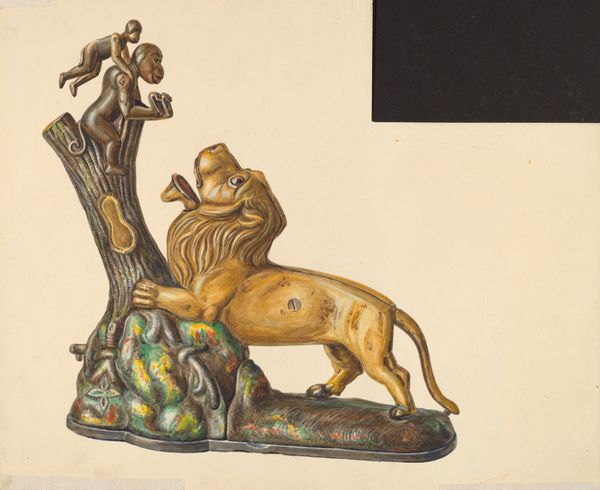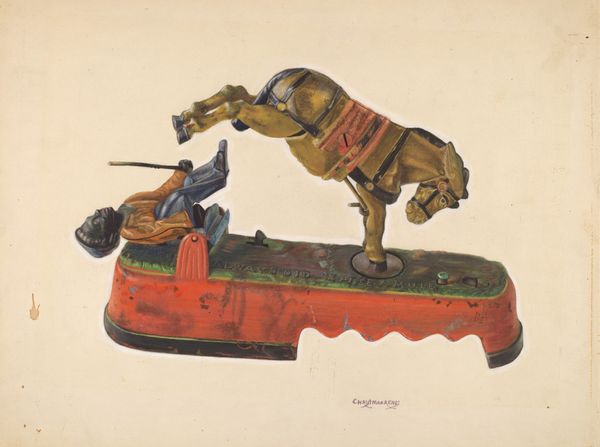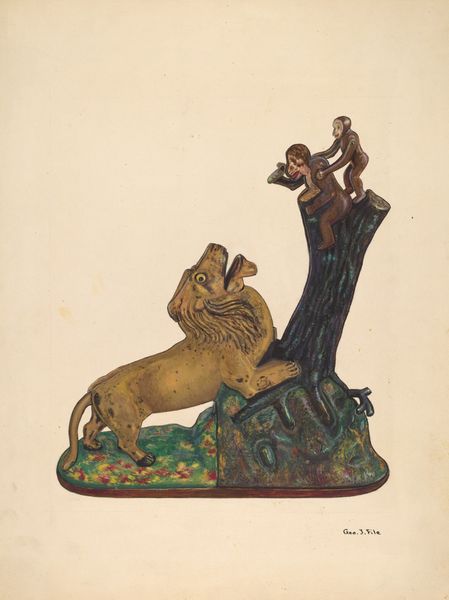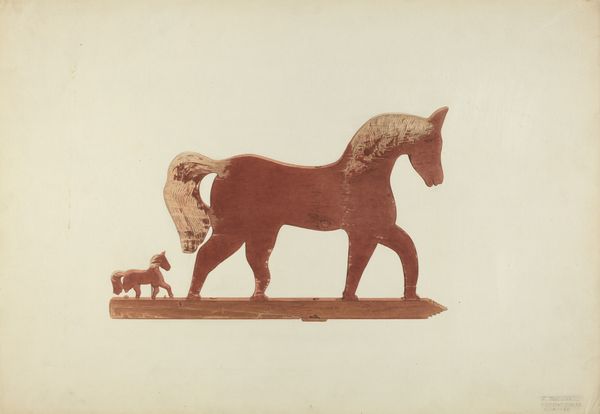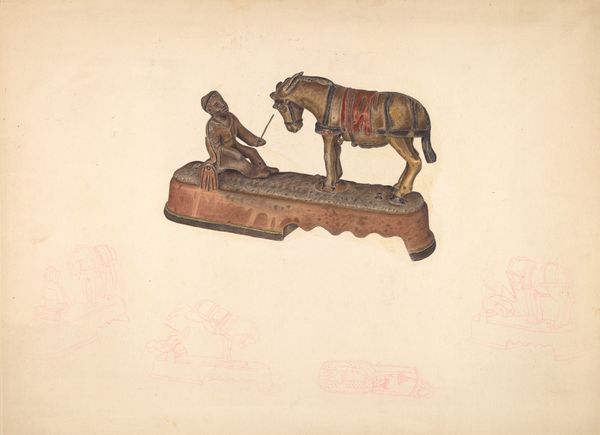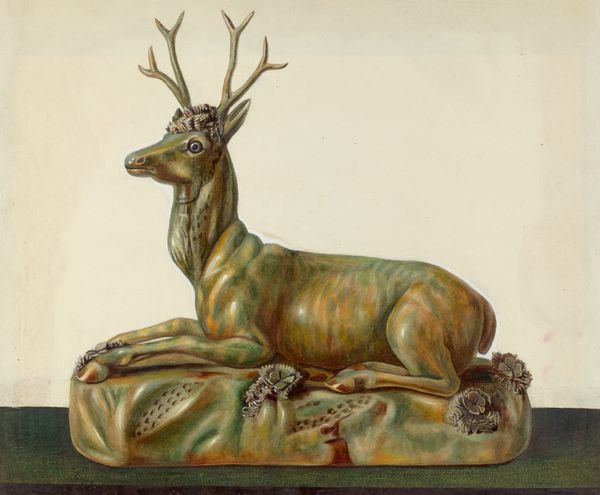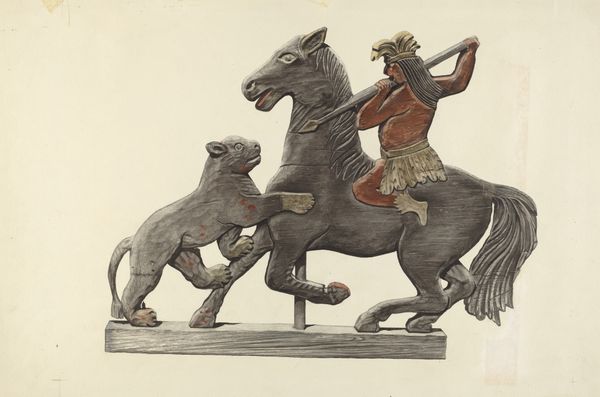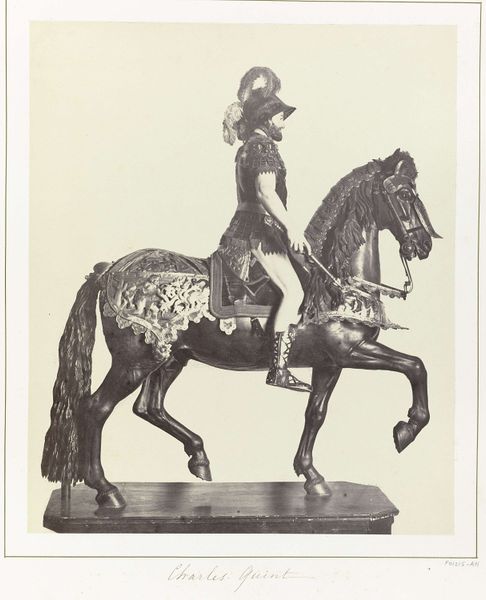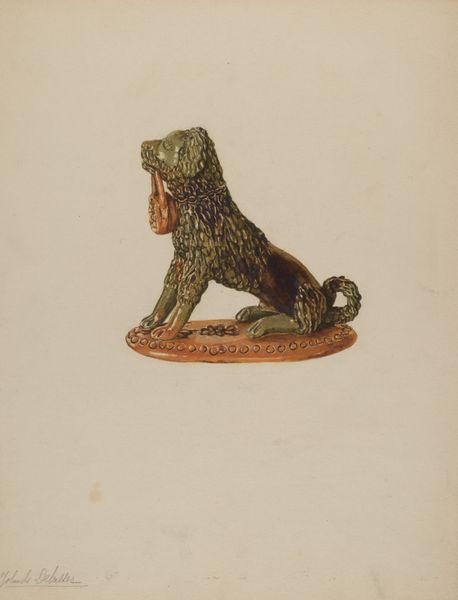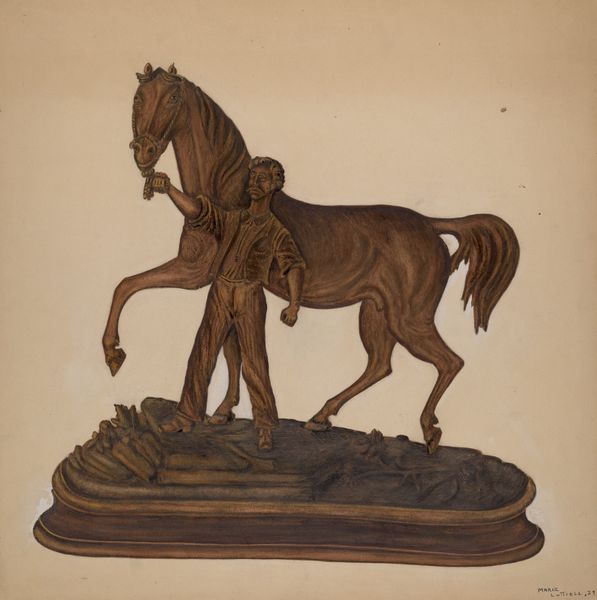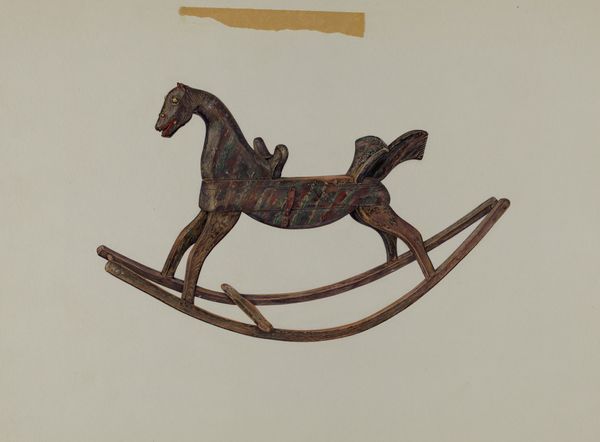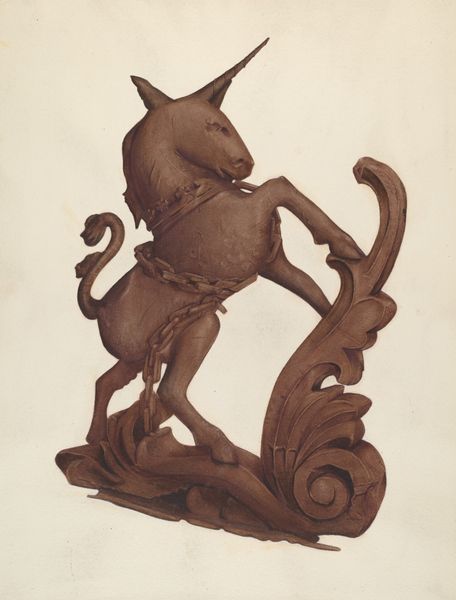
bronze, sculpture
#
narrative-art
#
stone
#
sculpture
#
bronze
#
figuration
#
sculpture
#
ruin
#
statue
Dimensions: 6 3/4 x 7 5/8 x 3 1/16 in. (17.15 x 19.37 x 7.78 cm)
Copyright: Public Domain
Curator: Here we have George Eddy's sculpture, titled "-Goat," dating from around 1880. It's rendered in bronze, and the interplay of the figures strikes me immediately. What are your initial thoughts? Editor: The patina, its wear and tear, the casting, is immediately what captures me. I want to know its means of production. The contrasting finishes give it a curious tension. The muted browns against the sort of iridescent green-blue of the turtle feel both harmonious and dissonant. Curator: Absolutely. Given the era and subject, the composition touches on narratives around labor and even exploitation. The human figure dominating the goat, in turn being confronted by the frog—it raises questions of power dynamics within society. Editor: And those materials speak volumes about the society that produced it. Bronze, the king of industrial materials! What does it tell us about consumption in that period? Was bronze becoming more widespread and cheaply available, for instance? Curator: Fascinating. We can view this in terms of the narratives embedded in materiality and industrialization, absolutely. Perhaps it mirrors class structures in a particular way; where we see the relationship of exploitation of labor and nature. The coin in this interaction almost stands in as a surrogate figure for the worker’s physical labor. Editor: Thinking about bronze-casting technology in the 1880s might give us deeper insights on production. It lets us explore a class-based analysis—that also helps decode other types of oppression and marginalization happening then, and now. Curator: It's a dense object, teeming with social commentary when viewed through the lens of intersectionality, challenging us to engage with uncomfortable truths and power structures. Editor: Definitely something to consider, that an object, designed as a fun display object for the parlor might hold some potent contradictions.
Comments
No comments
Be the first to comment and join the conversation on the ultimate creative platform.
